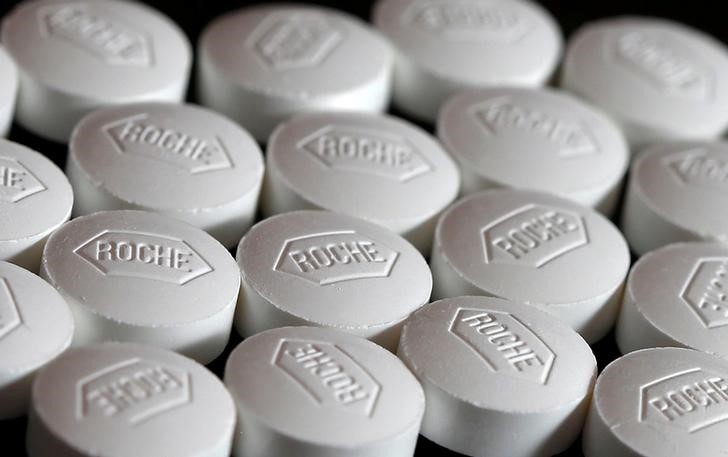European shares fall: Trump threatens ’massive’ tariff increase on China
Investing.com -- Roche on Thursday reported a 6% increase in group sales for the first quarter of 2025, driven by strong demand for its newer medicines and diagnostic solutions, while offsetting challenges from the loss of exclusivity on key drugs and healthcare pricing reforms in China.
Group sales reached CHF 15.4 billion, a 7% rise in Swiss francs, with the Pharmaceuticals Division accounting for much of the growth.
The Pharmaceuticals Division saw an 8% increase in sales (9% in CHF), totaling CHF 11.9 billion.
Strong demand for drugs targeting severe diseases was a key driver. The top growth contributors were Phesgo, Vabysmo, Xolair, Hemlibra, and Xofluza, which together generated CHF 3.6 billion in sales, an increase of CHF 0.7 billion compared to the same period last year.
Phesgo, a breast cancer treatment, posted CHF 0.6 billion in sales, fueled by growing demand in both China and the U.S. Vabysmo, used for severe eye diseases, continued to see uptake, generating CHF 1 billion in sales.
However, Roche faced a decline of CHF 0.2 billion from the loss of exclusivity on several drugs, including Avastin, Herceptin, MabThera/Rituxan, Esbriet, Lucentis, and Actemra/RoActemra, which have been key players in Roche’s portfolio for various cancer and chronic disease treatments.
Despite this, Roche’s newer products more than made up for the lost revenue. In the U.S., overall sales grew by 6%, driven by Xolair, Phesgo, Vabysmo, Polivy, and Ocrevus. These gains offset declines from medicines with expired patents and a dip in Tecentriq sales.
Sales in Europe increased by 5%, with the performance of Vabysmo, Polivy, Ocrevus, Phesgo, and Hemlibra driving growth.
The conversion of patients from Perjeta to Phesgo caused a drop in Perjeta sales. In Japan, sales grew by 3%, with Phesgo, Vabysmo, PiaSky (for rare blood disorders), Tamiflu (influenza), and Alecensa (lung cancer) among the main growth drivers. This growth offset challenges such as biosimilar competition and price cuts.
The International region saw an 18% sales boost, led by China, where sales increased by 14% thanks to demand for Xofluza and Phesgo.
The Diagnostics Division reported stable sales of CHF 3.5 billion, as strong demand for immunodiagnostic products and pathology solutions helped balance the impact of healthcare pricing reforms in China.
Regional performance varied across markets: in Europe, Middle East, and Africa (EMEA), sales increased by 4%, while North America saw a 7% rise, driven by growth across all customer areas. However, the Asia-Pacific region saw a 15% decline, primarily due to the pricing reforms in China.
Roche’s CEO, Thomas Schinecker, noted, “We had a good start to the year with Group sales increasing by 6% at constant exchange rates and we achieved a number of important milestones.”
The pharma company expects mid-single-digit growth in group sales at constant exchange rates and core earnings per share to increase in the high single-digit range for 2025.
Roche also plans to raise its dividend in Swiss francs. The company’s investments include $50 billion in pharmaceuticals and diagnostics R&D and manufacturing in the U.S. over the next five years, underscoring its continued focus on innovation and expanding its footprint in the region.
